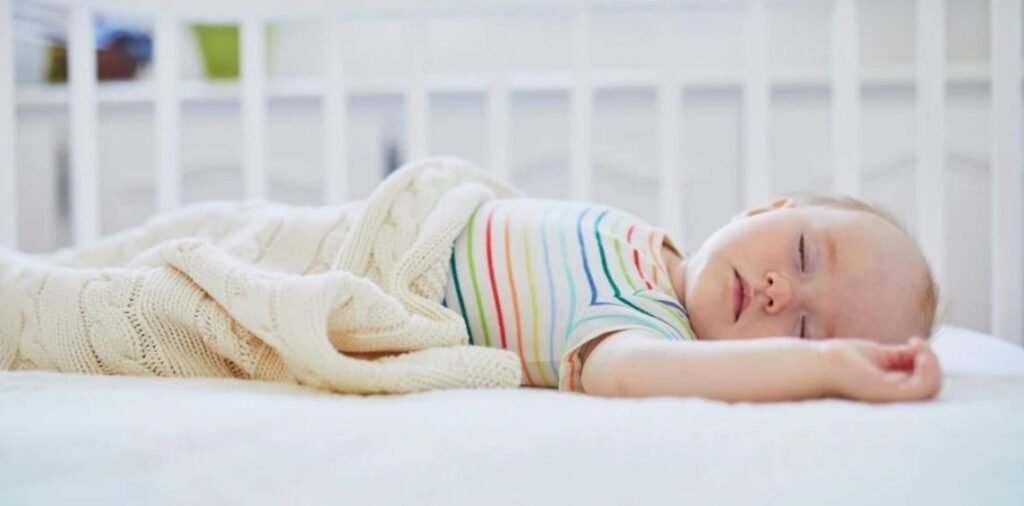
When it comes to baby sleep tips, it’s easy to feel like you’ve tried everything. Swaddles, pacifiers, blackout curtains, white noise — the list goes on. And yet, despite the overflowing Amazon cart and late-night Google searches, many parents still find themselves asking: Why isn’t this working?
The truth is, no single sleep product is magic. But the right tools, used consistently and thoughtfully, can create an environment that supports deeper, more restful sleep for both baby and parent.
Here’s a look at the baby sleep tools that real parents consistently swear by and how to use them effectively without falling for the hype.
1. White Noise Machines: The Sound of Sleep
One of the most universally recommended sleep tools is the humble white noise machine. White noise helps mask household sounds, prevent startling, and mimic the womb environment, making it easier for babies to fall and stay asleep.
According to Cleveland Clinic, white noise can improve sleep onset and duration for babies, especially when used as part of a consistent bedtime routine (Cleveland Clinic). It’s particularly effective during nap time, when environmental noise tends to spike.
💡 Pro Tip: Keep the volume under 50 decibels and place the machine at least 6 feet away from the crib.
2. Swaddles and Sleep Sacks: Security in a Wrap
For newborns, swaddling is a game-changer. It limits the startle reflex, which often causes babies to wake themselves mid-nap, and helps them feel secure. For babies who have started to roll, a sleep sack is the safe alternative offering cozy containment without restricting movement.
Parents rave about brands like Halo and Love to Dream for offering versatile, stage-specific options. AAP guidelines emphasize the importance of swaddling safely babies should always be placed on their backs, and swaddling should be discontinued as soon as signs of rolling appear (American Academy of Pediatrics).
3. Blackout Curtains: Let There Be No Light
Circadian rhythms are sensitive to light even in babies. A dark sleep environment sends a strong biological signal that it’s time to rest. This becomes especially important around 3–4 months, when babies begin producing melatonin.
Sleep Foundation experts recommend blackout curtains for both naps and nighttime sleep, particularly during early bedtimes when sunlight may still be peeking through (Sleep Foundation).
Blackout shades don’t just block light, they eliminate visual stimulation, which can be especially helpful for easily distracted infants and toddlers.
4. Crib Mobiles and Light Projectors: Handle with Care
While adorable, not all nursery add-ons support sleep. Mobiles that play music or spin with flashing lights may overstimulate babies rather than calm them. For infants under 6 months, simplicity is key focus on calming cues over entertainment.
If your baby does respond well to visual aids, soft light projectors with gentle movement or slow color fades can provide a soothing transition at bedtime. Just avoid anything that requires baby to stare upward to fall asleep, as this can disrupt natural sleep onset.
5. Pacifiers: A Controversial Lifesaver
Love them or hate them, pacifiers can be a powerful soothing tool for certain babies. They satisfy the innate sucking reflex, calm fussiness, and according to the Mayo Clinic may even reduce the risk of SIDS when used during sleep (Mayo Clinic).
That said, pacifier use during sleep can come with middle-of-the-night wakeups if the baby loses it and can’t retrieve it independently. Some families use it only for naps or only in the early stages of sleep training, then gradually wean.
6. A Predictable Sleep Routine: The Best Tool of All
While not a “product” in the traditional sense, a bedtime routine is perhaps the most powerful sleep tool in a parent’s toolbox. When bedtime is predictable and calming bath, book, cuddle, crib babies learn to anticipate what comes next.
Consistency builds trust, reduces bedtime resistance, and helps babies wind down naturally. As Healthline puts it, routines “send clear signals to your child’s brain that it’s time to switch from active mode to rest mode” (Healthline).
Pairing this routine with the right environmental tools can make all the difference.
Honorable Mentions: Worth Trying for the Right Baby
- Red light nightlights (less disruptive to melatonin than blue/white bulbs)
- Motion-sensing baby monitors (peace of mind, especially during sleep transitions)
- Aromatherapy diffusers (lavender, in small doses, can calm parents too!)
- Breathable crib mattresses (added airflow for babies who roll early)
Where to Find Trusted Guidance
With so many baby sleep tools on the market, it’s easy to fall into the trap of buying more instead of buying better. What matters most is using a few trusted tools consistently in a way that aligns with your baby’s age, temperament, and your family’s sleep goals.
That’s where resources like Tucksy come in. Built for tired parents, Tucksy curates research-backed advice, calming routines, and gentle strategies to make baby sleep easier — without judgment or overwhelm. Whether you’re just starting to build your routine or trying to break out of the 2 a.m. pacifier loop, Tucksy offers clarity when you need it most.
Final Thoughts
Sleep tools aren’t magic wands but they can absolutely make a difference. When paired with a consistent routine, responsive caregiving, and a sleep-friendly environment, the right gear can help your baby sleep longer and more peacefully.
And when your baby sleeps better, so do you.
The key isn’t having every gadget on the market. It’s finding the handful of tools and strategies that work for your baby, in your home. With a little trial, error, and support, deeper sleep can be just around the corner.